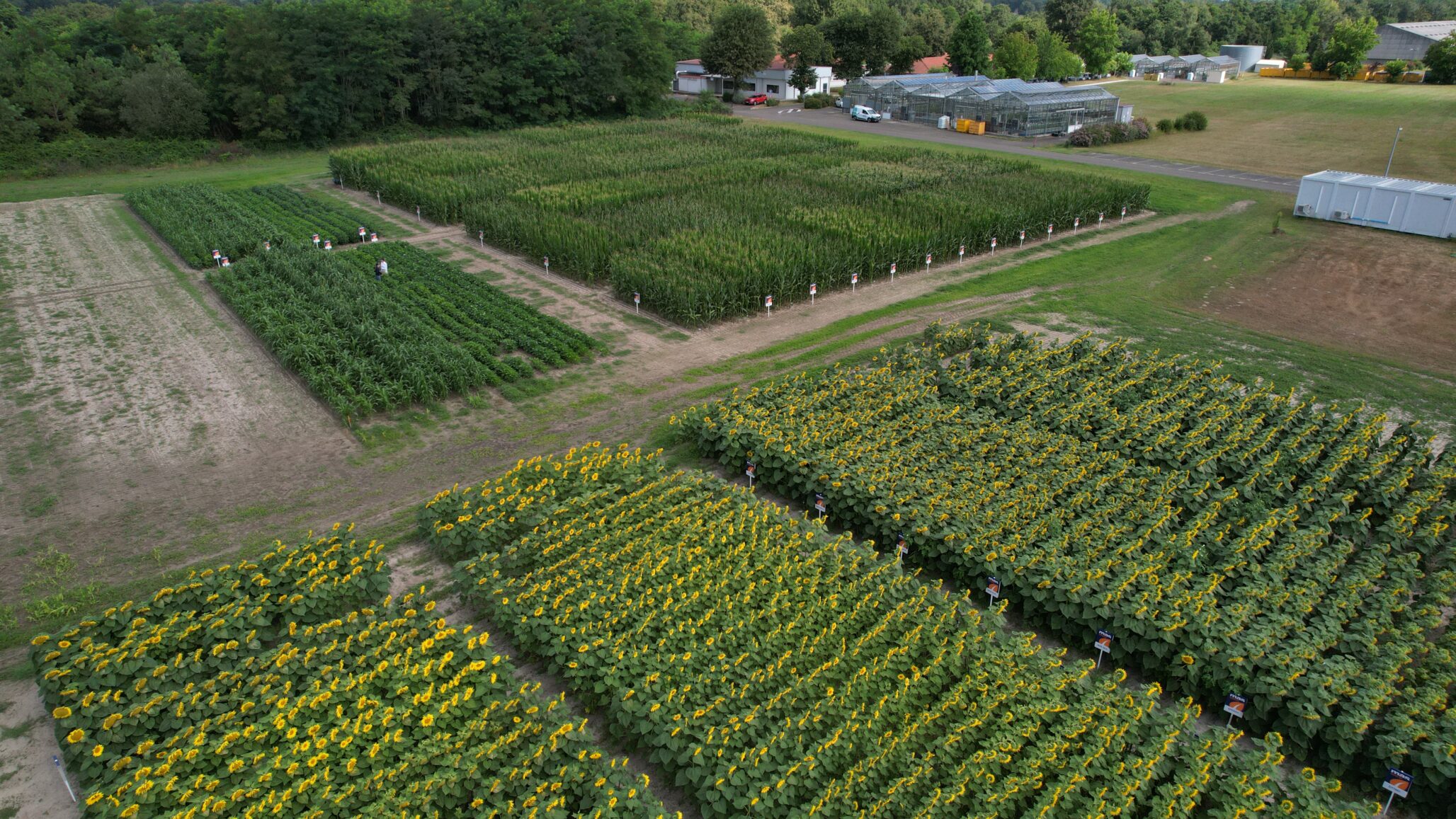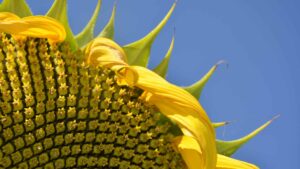Sunflower is an important source of food: sunflower oil is a valued, healthy vegetable oil, and sunflower seeds are enjoyed as a nutritious ingredient in many foods, as well as a tasty snack. It comes therefore as no surprise that sunflower is an important agricultural crop choice for many producers around the globe. In terms of breeding, yield improvement is the most important breeding target for all sunflower breeders. But how to make sure that a new sunflower hybrid performs well in several different environments?
The expression of sunflower yield is determined by biotic and abiotic factors. Breeding work allows, most of the time, to find efficient answers to all the damages by pests or diseases, but the interaction between varieties and environmental criteria is more difficult to analyze and therefore to select.
In a first set of studies which were carried out in France by INRA and TERRES INOVIA, it was demonstrated that there is indeed a possibility to structure the Genotype*Environment interaction using pedo-climatic parameters, at different stages of the sunflower cycle. Interestingly, the study also highlighted differences of behaviour between the various sunflower hybrids that were used.
Starting from there, as a company we developed our own in-house research program using data that we had collected for the last 10 years in our own European sunflower testing network. The aim was to find original agro-climatic indicators that explain the Genotype*Environment interaction. Using strong statistical methods and computer tools, we were able to identify a limited number of different “climates” that summarize the most frequent agro-climatic conditions present in the European sunflower growing areas. This research was carried out in 10 different countries, with the aim to find specific combinations of indicators for each “climate”. Moreover, a statistical model that was established with these indicators, significantly explains part of the Genotype*Environment interaction and highlights the capacity of some varieties to obtain stable and high enough yield in all of the identified “climates”.
The model is a powerful tool for the breeding or the marketing teams to characterize a posteriori testing locations and better analyze how relevant their network is. The use of this method in the breeding process will also be helpful in creating new hybrids broadly adapted to abiotic stresses.








